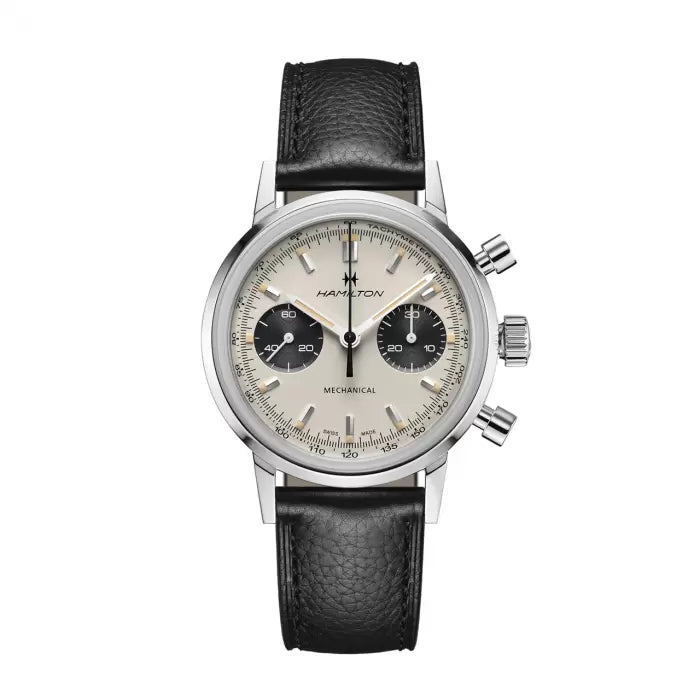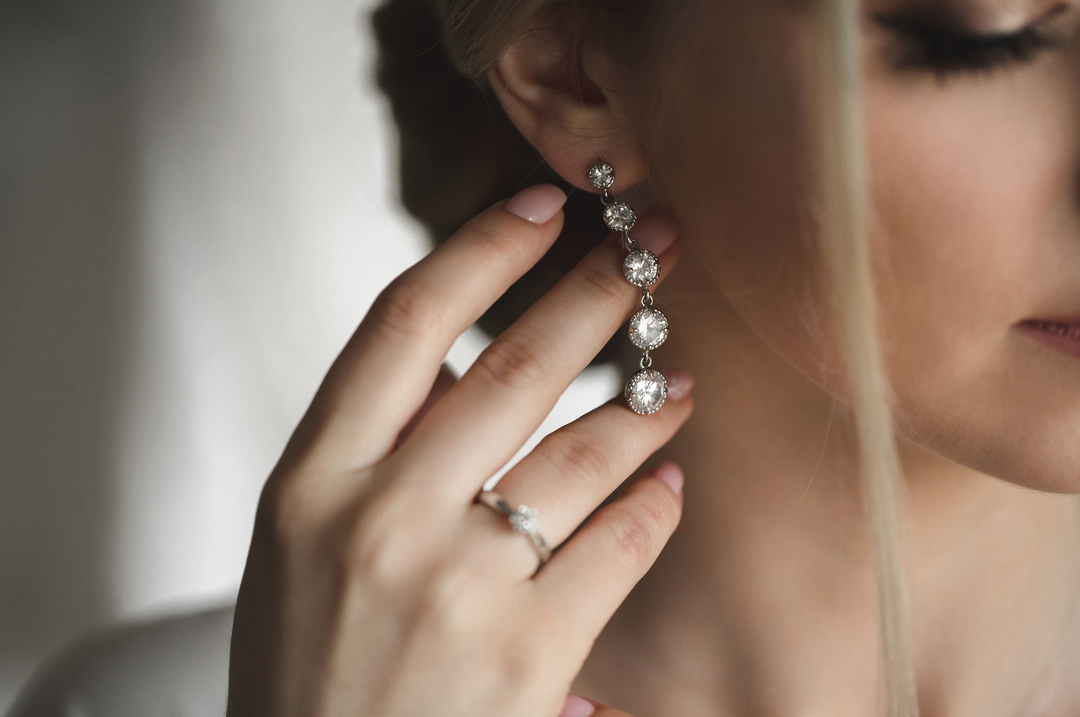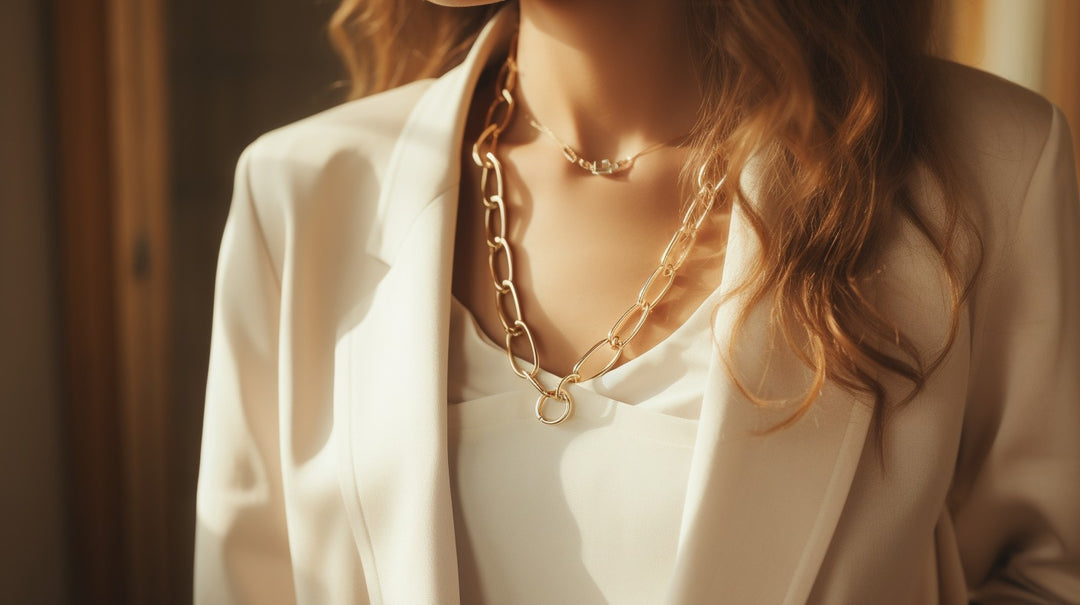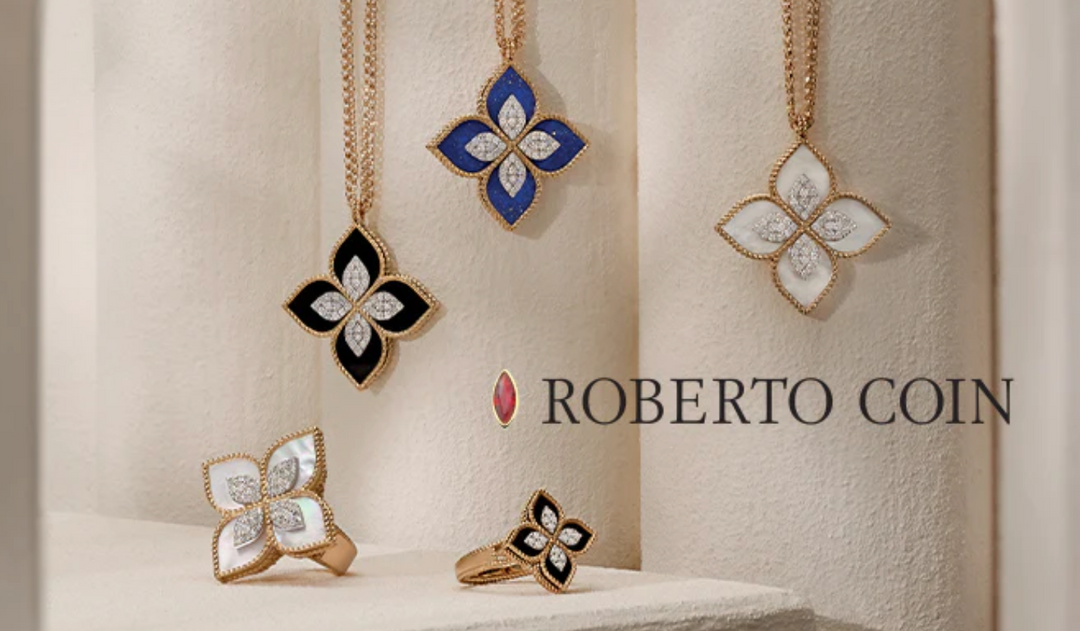The Ultimate Men’s Watch Guide
Welcome to the world of horology, where time is truly of the essence. Whether you are looking to become the next watch collector extraordinaire, or searching for your first or fiftieth luxury timepiece to celebrate an important event or ambition achieved, or you are simply looking for the perfect gift for that special man in your life that will not only be an investment, but a family heirloom, we are here to help you become a man’s wristwatch wizard, a timepiece expert, a discerning connoisseur.
This comprehensive guide breaks down the various types of watches and their many characteristics. We also give you the pros and cons of each so you can decide if the watch will suit a particular man’s lifestyle and his overall sense of style and comfort. Much like the car he drives, the whisky he drinks, the type of leisure activity he enjoys - a man’s watch says a lot about his character.
In this guide we cover the various types of watches to what makes them tick. Don’t just buy the first watch that catches your eye, make an informed decision. From the practical to the aesthetically-pleasing sleek status symbol, to the high-performing sporty watch that does more than just endure the elements – we can help you decide what watch belongs on you or your man’s wrist. A wedding band shouldn’t be the only piece of bling that a man gets to wear.
Time-Keeping Terminology
Who knew there was more to a watch than a band, hands and a dial? We don’t want to overwhelm you with all of the terms that watch enthusiasts use, but we will touch on some of the words you will need to know to navigate the rest of the guide with ease. Let’s start with horology – the study and measurement of time and the art of making watches and clocks.
- Balance Wheel: Like a pendulum, a balance wheel is the timekeeping device used in mechanical watches that swings at a constant rate (generally one oscillation per fraction of a second) operating the watch’s gears and forcing the hands to move forward.
- Bezel: Sometimes ceramic, though usually a metal ring that surrounds the watch crystal and holds it in place. Some are purely for aesthetics, remain in one place and do not have a scale and others which are generally found on dive watches rotate and contain a scale for time or other measurements.
- Cabochon: A polished and domed gemstone, rather than one is that faceted. Instead of sparkling, they enhance the reflection or translucence or color over a domed surface.
- Caliber: While this is technically the same thing as movement (see below), it is most often used when a manufacturer is designating a specific model name for a movement.
- Chronograph: The literal translation is “time writer,” but in this case you can think of it as the stopwatch function on a watch.
- Complication: When a watch does more than tell the time: For example, if it comes equipped with an alarm, a calendar, date, stopwatch (chronograph), let’s you know the phase of the moon, or if it has repeaters that chime out the time. The more complications, the more complicated to build and the more expensive the watch.
- Crown: This is the small knob located on the side of the watch (if your mechanical watch is not automatic) to wind it and keep it running and also to change the date.
- Crystal: Made from either glass, acrylic, or synthetic sapphire it is the domed, clear cover that protects the watch face. Synthetic sapphire is more expensive because it is the most scratch resistant in comparison to glass or acrylic crystals.
- Escapement: A component inside a mechanical watch that shifts the power from a wound-up watch into the movement of the watch’s seconds hand by driving the balance wheel at a steady rate. In other words, it transfers energy from the power source to the counting mechanism. It controls motion, generally in steps and is responsible for the ticking noise.
- Gear Train: A visually appealing system of gears that transfer power from the mainspring to the escapement – and allows the watch to run for hours by multiplying the output rotation. It also dissects time into useful components –seconds, minutes, and hours.
- GMT: While this officially stands for Greenwich Mean Time, a GMT watch enables you to track time across multiple time zones simultaneously. Originally created for pilots in the 1950s, today these types of watches suit frequent globetrotting flyers.
- Indices: Indices are another way to refer to the watch’s hour markers. There is a wide variety of indices for example (Arabic, Breguet, and Roman Numerals; Arrow & Diamond Markers; and Batton, Dagger, Round and Stick Indexes)
- Jewels: Surprisingly, jewels (synthetic rubies or sapphires) are not used for aesthetics, but accuracy of the movement. They are actually used as bearings at the heaviest points of wear in a watch movement in order to decrease the amount of friction between moving parts and increase the life cycle of the watch.
- Lug: The pieces of metal that extend from the top and bottom of a watch’s case and connect to the bracelet or strap, the two ends of the lug hold a spring bar which keeps the bracelet or strap in place.
- Luminescence: Commonly referred to as “lume” by watch aficionados, luminescence is the glow radiating from watch numerals, hands and indices that have been varnished with a photo-luminescent material.
- Mainspring: A spiral torsion spring of metal ribbon that becomes tightened when a watch is wound and is used as a power source in mechanical watches.
- Movement: This is what literally makes the watch tick – also known as caliber. Movements can be mechanical (automatic or hand-wound) or quartz (battery powered). The movement is considered the “heart” of the watch. We could write a blog simply on this topic alone, so we will try to sum it up in the simplest terms. The movement encompasses the sum of the parts that actually make the watch work. This includes the sweep of the watch’s hands around its face to the way its inner parts manufacture that effect.
- Pusher: This is the button located on the outside of a chronograph watch that triggers the stopwatch mechanism. Most chronographs have two different pushers, one for stopping and starting the stopwatch and another button for resetting.
- Tourbillon: A type of escapement encased in a revolving cage that is said to impede the small but very real effect that gravity can have on the precision and accuracy of the watch. However, since watches are worn on the wrist, rather than in our pockets, the tourbillon is less about the watch’s performance and more about tradition, craftsmanship, and overall aesthetics – they showcase the manufacturer’s expertise and as such, demand exorbitant prices.
- Skeleton: This type of watch reveals what is happening on the inside – like its movement and any other complications.
- Tachymeter: This allows you to measure speed and sometimes distance.
- Tropical: This term is used for a specific type of vintage watch. In the 1960s, watch makers used a particular type of paint for black dials that faded to a chocolate/brown color after being exposed to sunlight over time. Brands eventually corrected the mistake, but there are still a few watches still out there with what they coined a “tropical dial” and due to their scarcity, they are more expensive.
- Unidirectional Rotating Bezel: This is specifically for a dive watch. The bezel moves counter-clockwise which helps a diver track air supply.
Watch Types
Listed below are some of the most popular types of watches on the market today. As you will soon find out, watches are so much more than just an instrument to tell the time. Watches have specific features that distinguish them (otherwise known as complications), these features can be practical and/or purely for aesthetic appeal. Read on to discover what will be perfect for your man’s watch wardrobe.
From the Sporty Adventurer to the Consummate Traveler
The five watch types listed below are for the men that need a durable, reliable, multi-functional watch that suits their active, adventurous lifestyle. Some men may just like the style and all the cool buttons and dials.
The Military/Field Watch
We will start with the military/field watch as this is what sparked the men’s wristwatch trend to begin with. Pocket watches were used until 1879, when German Emperor Wilhelm purchased two thousand wristwatches for his naval officers – saving them precious seconds during battle. Coordinated, synchronized timing became more important for missions in modern warfare and soldiers started to wear them in WWI and were mass produced during World War II.
American GIs came home with their trusty field wristwatches and the trend caught on. While military/field watches may not be suitable for formal affairs, they are certainly fashionable and considered a great choice for outdoorsy men. Listed below are some of the characteristics of a military/field watch:
- Generally military/field watches bodies are made of titanium, stainless steel, or Physical Vapor Deposition (PVD) - a protective coat which cannot be removed.
- The bands need to be sturdy, but also replaceable - so they are generally made from canvas, leather, or nylon, the cases are generally made from rubber
- Straightforward design, little to no excessively polished surfaces, some are coated with matte paintings, built to be indestructible and able to handle all weather conditions, featuring both automatic and quartz movements.
- The second hand stops when the crown is pulled – this was an essential tool that helped military officers coordinate missions.
- The indices/numbers are legible, with a luminous background, glare-proof crystal, the contrast is carefully considered (usually a dark dial with white numbering) so that everything is readable and decipherable at all times and in all lighting conditions.
Dive Watch
Rolex registered a patent in 1926 for the first water-resistant watch case. Today, dive watches are generally water-resistant up to 1000 feet. These watches are not just water-resistant they are also shock-resistant, and built to withstand corrosion from the salt water and much more.
Although these watches are specifically made for water sport activities, they are certainly trendy and perfectly suitable for everyday wear. Here are some other features of a typical diver's watch:
- Diving watches are regulated by the International Organization for Standardization (IOS)
- Diving watches are generally larger than other watches, the case is larger and the band is longer so that it can fit over a wetsuit and divers can effortlessly rotate the bezel.
- Made of stainless steel, mineral glass, thicker crystals and domed sapphires to ensure that the watches can handle the water pressure, are scratch-resistant, durable and can’t be corroded by the salt water.
- Diving watches are generally larger than other watches, the case is larger so that divers can effortlessly rotate the bezel, even with a wetsuit on.
- A unidirectional, rotating bezel allows divers to monitor their air supply and time their dives and can only be rotated anticlockwise to ensure that the bezel can’t be wrongly adjusted.
- To stop pressure build-up diving watches come fitted with a helium release valve and use rubber seals to protect the opening around the crown and the crown is screwable for additional resistance.
- The minute hand, the numbers 3,6,9, & 12, & the zero-marker on the bezel are made as large and as luminous as possible for easy legibility underwater.
Chronograph Watch
The French king Louis XVIII needed a stopwatch to time horse races, so many believed that was why Nicolas Rieussec, the king’s watchmaker invented the chronograph in 1821. However, it was later discovered that Louis Moinet invented the chronograph watch in 1816. The Brietling family was the first to develop a chronograph watch with the protruding pushers and busy dials and multiple sub-dials and scales we see featured on it today.
Not to be confused with the chronometer, which is an accurate automatic watch, the chronograph is a tech-heavy, sporty watch and one of the most popular watches on the market today. A typical chronograph watch comes with the following features:
- A basic chronograph has a minute sub-dial and an independent sweep second hand, you can stop, start and return to zero when you put pressure on the stem
- Most chronographs have two to three smaller sub-dials to measure hours, minutes, seconds and even tenths of a second, with two pushers at two and four o’clock
- The sub-dials you generally see in chronographs are 12-hour and 30-minute counters with a running seconds display, the main hand for seconds stays at the 12 o’clock position when it’s not being used
- Some chronographs are equipped with tachymeter or telemeter scales on their bezels.
- The tachymeter’s function is to convert distance into speed. In other words, it tells you the traveling speed over a fixed distance in miles or kilometers per hour.
- The telemeter scale is used to measure the distance separating an observer from a phenomenon which is first visible and then audible.
- There is also a flyback chronograph another complication in which you can use the reset function without having to stop the chronograph – rather than having to stop, reset and restart the watch and time an event after the chronograph has started.
Aviator Watch/ Pilot Watch
The adventurous pilot, Alberto Santos-Dumont who accomplished the very first powered flight in Europe became friends with Louis Cartier and he asked him to create a watch that could be worn on his wrist, leaving both hands free to operate his airplane. Thus, the very first aviator watch, The Santos de Cartier, was created in 1906.
Aviator watches have a major cool factor. They simply never go out of style.
Much like the military and dive watches, the aviator watch caters to the pilot’s need for efficiency and accuracy - it differs in that it doesn’t follow a uniform formula. That being said there are a few characteristics that make an aviator watch stand out from the crowd.
- Aviator watches typically have extra-large cases and high-contrast dials and large, luminous numerals that glow in the dark–
- The pilot will need to adjust the time without having to take his glove off, so a larger, onion-shaped, chunky crown is needed
- They need long straps so the watch will be able to fit over a flight jacket
- Modern Aviator watches have additional features- from a basic countdown bezel to a slide rule bezel – which combines scaled inner fixed and outer rotating bezels – together they can assess distance, fuel consumption, airspeed, flight time, and rate of climb or descent.
- Other features may include time zone/GMT functions, a tachymeter, and a chronograph. While the plane itself will have these tools, it is always good to have a backup.
GMT Watch
International airplane travel was starting to take off in the 1950s. Pan-Am was the most popular airline at the time and they asked watchmakers to design a watch that could keep track of two time zones at one time. Rolex came to the party and created what became known as the iconic red-and-blue (red for a.m., blue) “Pepsi” rotating bezel with a “GMT” hand that points to the 24-hour time scale on the bezel. This was a brilliant solution. While some may feel that a GMT watch
While GMT (Greenwich Meridian Time) watches were created specifically for aviators, even astronauts; this type of watch is perfect for the man who is a frequent traveler or someone who has a multinational business and must dart across the globe on a regular basis. It is also ideal for those who have international zoom meetings, whether at home or in the office. Here are some of the common characteristics of a GMT watch:
- It has a 24-hour rotating bezel with a fourth hand of a different shape or color that makes one full revolution around the dial every 24 hours. All watches have bezels, but not all bezels rotate. If it is a GMT watch, the bezel will rotate.
- There are generally two types of GMT watches. The first has an independently adjustable GMT hand and is not linked to the date function. The second type links the GMT hand to the minute hand while the normal hour hand is independently adjustable and is linked to the date.
- On an analog watch there will be three hands, if it is a GMT watch there will be a fourth additional hand that rotates separately from the other hands and specifically shows the hour of the second time zone. This hand will rotate once every 24 hours and give you the exact time of the other time zone.
- On a GMT watch specifically made for the office, the 24-hour and is the one the is jumped in one-hour increments.
- Most GMT watches come with chronographs and compasses. They are generally water resistant, have rugged cases, and legibility suited for an adventurer.
Hamilton has a wide range of watches for the man with an active lifestyle.
The Everyday to the Someday to the Special Day Watch
We believe every man should have at least one nice watch – something that you would give as a graduation gift, or an engagement present, when he has his first child – an heirloom to pass down from generation to generation. This is one of the reasons why smartphones have not made the wrist watch extinct.
The type of watches listed below make a statement, can be worn by the men who wear business casual clothes, a tailored suit, a tux.
The Everyday Watch
There are certain basic accessories that every man needs – from a good winter coat, to a trusty pair of sneakers, to a basic white t-shirt. The everyday watch is versatile, simple, and uncomplicated. Something a man would be comfortable wearing everyday – so it totally depends on what the man wears everyday – from business casual to a suit to a tailored three-piece suit. So, what are the characteristics of an everyday watch?
- The strap could be made from anything – precious metal, stainless steel, rubber, or leather – as long as it is comfortable, durable, and able to blend in seamlessly with any outfit. It’s a good idea to have a watch that matches the majority of your belts and shoes.
- Height: It must have a thin casing allowing it to fit underneath the cuff of whatever long sleeve shirt he wears on a regular basis.
- The face itself generally comes in white, silver or black and is never wider than 42mm.
- Never ostentatious - not too many complications rather than a date window
- A simple decoration – like a single cabochon over the crown and the hour markers are generally Roman numerals or simple batons
- Single colored, analog dials with few features and polished finishing are ideal for everyday wear
Black Tie
At some point, in most men’s lives, they will be expected to attend a black-tie event – whether it be an extravagant wedding, a milestone birthday, an award ceremony, a formal charity event, a glamorous or prestigious work event – the list could go on. Wearing a watch used to be a faux pas, but it’s 2021, the rules have changed.
Plus, men don’t get a lot of choices when it comes to bling and a watch allows them to add a bit of personality to an otherwise uniform outfit. That being said, some fashion rules have stayed the same as a matter of pure aesthetics. Here is some advice about what to keep in mind:
- First rule of thumb: Go with your gut. Less is always more. Keep it classy.
- Match the watch to the color or metal of your cufflinks and studs. You can also match the metal of your watch to your glasses, or any rings you might wear.
- The watch should be slim and thin and fit tight enough on your wrist so that it doesn’t slide back and forth underneath your cuff.
- The clasp should be unembellished and straightforward – with no noticeable logos
- A simple black leather strap is recommended, but as long as the strap is understated, whether it be leather or metal – you should be fine. Again, go with your gut.
- The dial should be uncomplicated – no chronographs, or GMTs – and markers or Roman numerals are a touch classier than numbers.
- If you are right-handed, wear it on your left wrist and vice-versa.
Luxury Watches – Heirlooms, Collectible, Vintage
A luxury, vintage watch never goes out of style. Not only is it a financial investment, but it is also an emotional investment, a family heirloom to be passed down from generation to generation. Luxury watches with reputable names that have been around for centuries like Rolex, Patek Philippe, or Breitling – use the best, most enduring materials. They are encased in beautiful and valuable gemstones, use high-end movements, and are made by the best artisans in the industry. Luxury watches never lose their value, in fact, some luxury watches increase in value over time. Listed below are the characteristics of a luxury watch:
- Obviously, the name and heritage of the manufacturer and the cost/high value appreciation of the watch itself are the most important factors. In particular, Swiss watches (with the Seal of Geneva) are universally regarded as some of the best in the world.
- The case materials and the metal straps/bracelet are always made with high quality and incredibly durable materials – stainless steel, platinum, gold, titanium, steel alloys, etc...
- Leather straps are either “full grain” or “top grain” - which ensures their durability.
- The watch glass or crystal must be scratch and crack- resistant and able to protect the inner workings from getting damaged – some use plexiglass or mineral glass – but most luxury watches are made with sapphire crystal.
- Most luxury watches will have an automatic movement, but some do use mechanical movements – some watch owners consider the act of manually winding their watch a bonus
- Some watches will come with an official chronometer rating or certificate from the Official Swiss Chronometer Testing Institute.
Hamilton Jewelers carries a wide variety of watches that would suit any man’s particular taste and lifestyle. A quality timepiece is an essential part of a man’s wardrobe and it does so much more than tell the time, it implies that the man wearing it is reliable, reputable, and respectful of his time and yours. A seasoned horology aficionado will agree that there is no item in a man’s wardrobe that combines function and fashion quite like a world-class wrist watch.
Hamilton invites you to browse through our online catalogue and find the watch that belongs on your wrist.





























